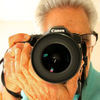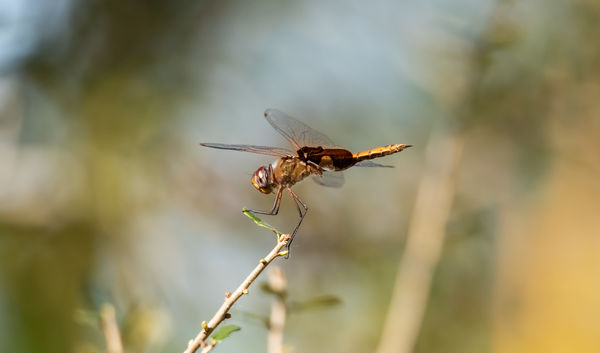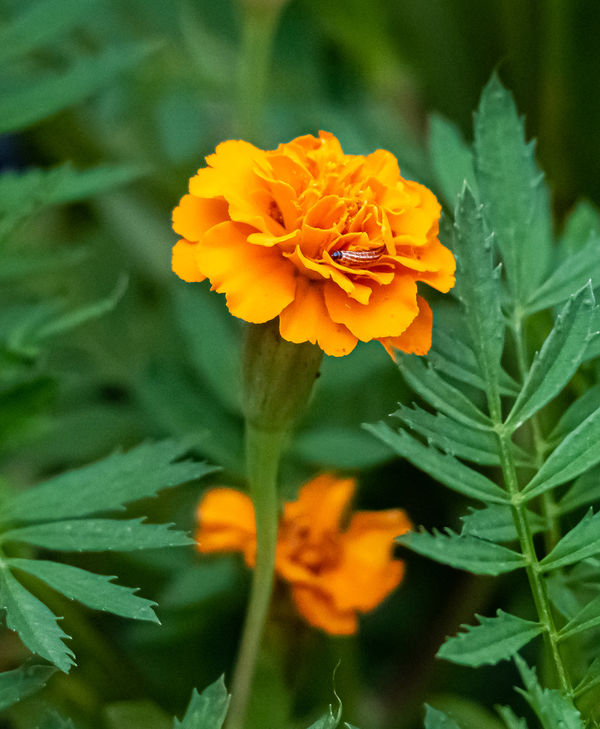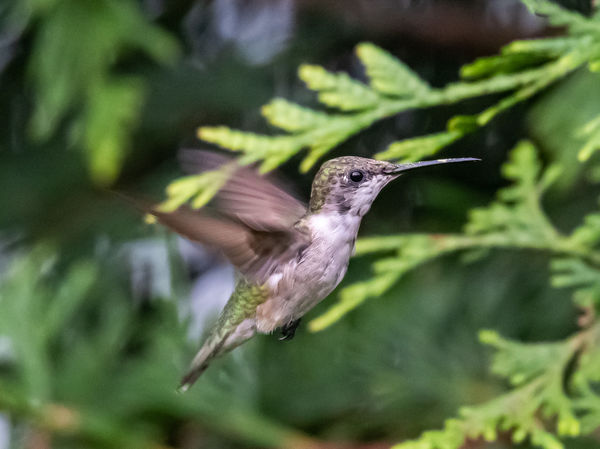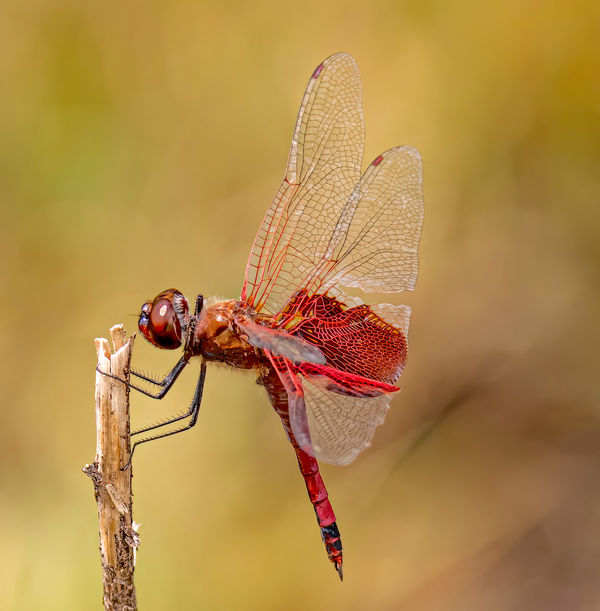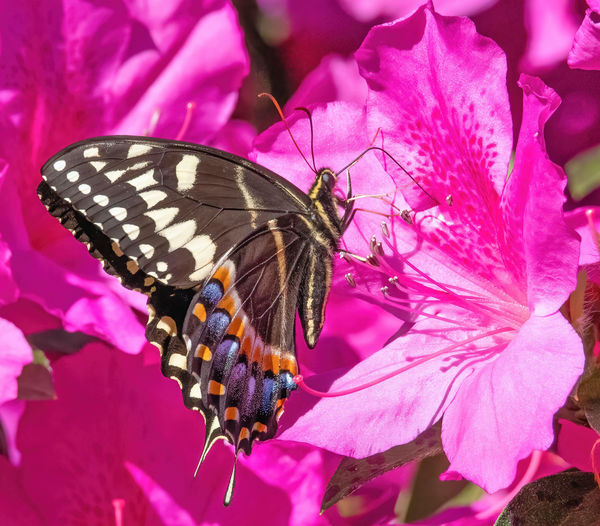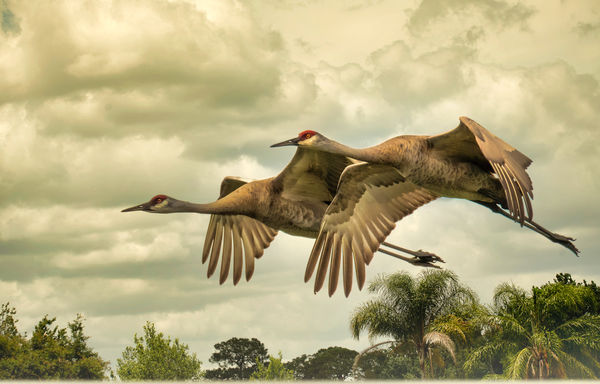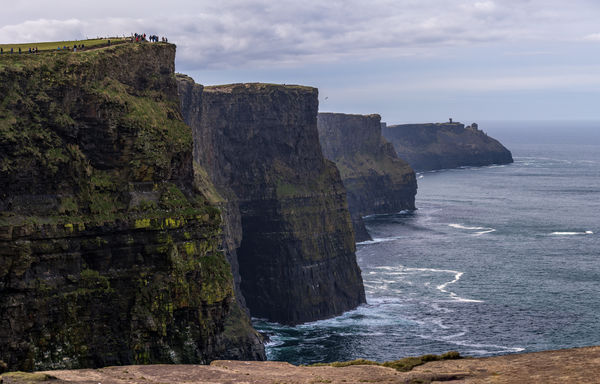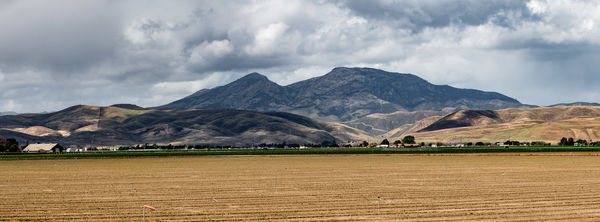What lens should I get
Jun 3, 2021 13:00:46 #
Different lenses for different types of photography. Don't know what lens you have now or camera for that matter. The 16-30mm is good for landscape, but if you are interested, as you say, in bird photography, then go for the 160-600. You can use that lens to shoot flowers and such. However, if you want to combine both and save a few hundred dollars, then go with the Tamron 18-400 a crop sensor lens.
Jun 3, 2021 13:21:49 #
schaut wrote:
Since you like Tamron, why not get an 18-400mm all around lens?
An 18-400 is a poor compromise for two of Tamron's sharpest lenses. Besides, it makes no sense given that he only has a D300 crop camera, and his other two cameras are a Z6 and D610 - both full frame.
Jun 3, 2021 13:26:13 #
Goodcatholic2 wrote:
I love my Tamron lenses and tore between the 15 to 30 mm and the 150to 600mm I love flowers and landscapes but I also would like to get into bird photography as I think they are an amazing creature of God. What are y’all‘s thoughts thanks in advance.
Mike
Mike
A 15-30 is great for night sky photography, and some scenery when you are in close quarters. It's ok as a real estate lens too. It is less effective in wide distant landscape shots - except for maybe at 30mm. I've got a 14-24mm F2.8 that gets used infrequently, and usually when there is no other option. Looking at my metadata in Lightroom, my most frequently used lenses for landscape are my 45mm and 85mm, followed by my 70-200 and my 24-70.
The 150-600 is an excellent wildlife and birding lens, and some landscape.
Jun 3, 2021 13:43:41 #
amfoto1
Loc: San Jose, Calif. USA
Goodcatholic2 wrote:
I love my Tamron lenses and tore between the 15 to 30 mm and the 150to 600mm I love flowers and landscapes but I also would like to get into bird photography as I think they are an amazing creature of God. What are y’all‘s thoughts thanks in advance.
Mike
Mike
Birding, flowers and landscapes are three very different types of photography that call for different "tools". Let's look at them one at a time.
1. BIRDING
There's a saying among birders that "you never have enough lens". What this means is that some of your small, quick subjects will always be out of reach, no matter how powerful a telephoto you haul around. If you have 300mm, you'll want 400mm. Once you get 400mm, you'll want 500mm... etc.
You didn't say what camera you're using, and that's an important factor. A crop sensor camera gives the impression of "greater reach" with a telephoto. It's really not that the lens is "longer". It's that the smaller sensor doesn't need as much telephoto focal length to "fill the viewfinder" with a small, distant subject.
I'm going to assume (and hope) that you are using a crop sensor camera. As such, a 150-600mm lens would be extremely powerful. It's also relatively large and moderately expensive. The Tamron SP 150-600m "G2" is on sale right now for $1200. It's 4.25" x 10.25", grows to 13.5" long when zoomed to 600mmm and its lens hood adds another 4.25" to that length. It uses 95mm filters, weighs 4.5 lb. and comes with a tripod mounting ring. Not the biggest or heaviest lens, by any means... but still pretty large and hefty.
200mm or 300mm is NOT long enough lens for most bird photography. But on a crop camera, assuming that's what you're using, 600mm might be a bit of overkill. Yes, there will be times when it might be nice to have. But, with some stalking skills, attractants such as food and use of blinds or camo you can get a lot of good shots with a 400mm lens and Tamron offers a couple zooms that might do the job.
Tamron 100-400mm is less expensive at $800, weighs a lot less... 2.5 lb... and is considerably smaller: 3.5" x 8", 11" at 400mm, plus a 3" deep lens hood. Note that the 100-400mm does not come with a tripod mounting collar, but it is designed to accommodate one that Tamron offers separately for $129, which probably adds around 6 oz. to the total weight. With 400mm focal length on a crop camera, even with image stabilization (which all these Tamron have), I strongly recommend adding the tripod mounting collar. The Tamron 100-400mm uses 67mm filters.
Tamron 18-400mm is a "do it all" design that currently is on sale for $600, weighs even less... under 2 lb... and is a little smaller: just over 3" diameter and 8.75" long at 400mm, plus about 2" deep lens hood. It uses 72mm filters, doesn't come with and there's no option to fit a tripod mounting collar to it. Note: The 18-400mm is a "crop only" lens, while the other two are full frame capable.
Of the three lenses above, at 400mm the 150-600mm has somewhat better corner to corner image quality on a full frame camera. However, if using on a crop sensor camera, the corners are cropped off and there's not much difference in image quality between the 100-400mm and 150-600mm with both at 400mm. They are both quite superior to the image quality of the 18-400mm with all of them when they're all at 400mm. While the 18-400mm has surprisingly good image quality for such and extreme range (22X) "do it all" zoom, it DOES compromise image quality to cover that range. Far less extreme 4X zooms like the 100-400mm and 150-600mm will always offer better image quality than any "do it all".
Another thing, the 100-400mm and 150-600mm Tamrons both also use "USD" or "ultrasonic" focus drive, which is fast and likely to be helpful with quick little critters like birds. The 18-400mm uses a different type of focus drive... "HLD"... which I know nothing about, but suspect doesn't offer the same performance.
A nice thing about all three of the above Tamron zooms is that they have a 6 year warranty. That's longer than most other lens manufacturers offer... much longer than some.
The 100-400mm and 150-600mm tripod mounting collars also have a neat feature... they have a built-in Arca-Swiss quick release compatible dovetail. Tamron has been doing that with their more recent lenses and it's a nice feature that I wish other lens makers would implement. It means you don't need to buy a separate lens plate (typically $25 to $30) to mount the lens on any Arca-compatible QR equipped tripod/monopod head. (Arca is by far the most widely used quick release system... with many manufacturers making compatible devices, and of course Arca-Swiss themselves.)
While possible to use with larger flowers and less tight compositions, none of the above lenses have "macro" capabilities for very small, very close subjects. The 18-400mm has the best magnification of the three, with about 0.34X magnification (about 1/3 life size). The 100-400mm offers slightly less at 0.28X, while the 150-600mm has the least possible magnification with around 0.24X (1/4 life size). I do not know at what focal length these closest distances and maximum magnifications are achieved. If they all have to be racked all the way out to 400mm for this level of magnification, that's not a good thing. But these lenses aren't intended for close-up photography. For what they're intended, telephoto work, they are actually pretty good... Some other very good and much more expensive "premium" 400mm and 600mm lenses are only able to achieve 0.16X (approx. 1/6 life size).
And, while it's not unheard of, it's somewhat unusual to use a telephoto lens for landscape photography... It's sort of a specialized niche to use telephotos to "compress" fairly distant objects in scenes. Of the three, only the 18-400mm goes to moderately wide focal lengths that are more typical of what's used for landscapes.
2. FLOWERS
For flower photography, you may want a macro lens. Tamron makes a very good one in their SP 90mm f/2.8 VC USD, but it costs $649. There are other, less expensive that might serve as well. I might suggest the Sigma 105mm f/2.8 OS HSM as an excellent alternative that's currently $569. Depending upon what camera you have, there may be some other alternatives. Tokina ATX-i 100mm f/2.8 is very good and one of the least expensive at $429. However, that Tokina doesn't have image stabilization like the above Tamron and Sigma do, it uses a slower "micro motor" type of focus drive, and the version for Nikon DSLRs cannot autofocus on some of the popular cameras (it will be manual focus only on all D3000-series and D5000-series models). These aren't necessarily "deal breakers", though... because and high magnification images stabilization is of limited assistance, most macro lenses are not particularly fast focusing anyway, and in fact many people prefer to focus them manually.
While those three macro lenses are good choices, there may be others worth considering that can serve well for flower photography. For live subjects (such as insects) I recommend the above 90mm to 105mm range, but flowers aren't shy and don't run away when you get close, plus often may not need to be so close for full 1.0X magnification (also "1:1" or full "life size", which means that you can photograph an object the same size as your camera's sensor... at which a US quarter will fill a full frame camera's viewfinder top to bottom, while a dime will nearly do the same in a crop sensor camera)... it may be possible to use a more compact 70mm, 60mm or possibly even 50mm macro lens. These may be less expensive, too. A number of manufacturers offer a variety of lenses in those focal lengths. Tamron made a very nice 60mm, but discontinued it a while ago. Sigma makes (? made ?) a 70mm.
There are also longer focal length macro lenses.... 150mm, 180mm and even 200mm. Those are mostly just needed with dangerous or particularly shy subjects, are more difficult to work with and tend to be considerably more expensive. They aren't really needed for flower photography.
3. LANDSCAPES
You mention the Tamron SP 15-30mm f/2.8 lens and I assume are considering it for its landscape photograpy potential. I'm going to recommend AGAINST purchasing that lens. Landscape photography rarely requires an f/2.8 lens aperture. In fact, you will usually be stopping down to f/5.6, f/8 or maybe even f/11 for maximum depth of field. This might mean using a tripod and a longer exposure. But it also means that lenses with smaller max apertures and even variable apertures can work fine. The will also cost less, weight less and be smaller than that 15-30mm!
Another thing, the Tamron 15-30mm has a convex front lens element that precludes using standard, screw-in filters on it. While other types of photography may not require use of filters, landscape photography is one type where they can be quite beneficial. A circular polarizer can deepen the blue of the sky and the greens of foliage, make clouds stand out, as well as reduce reflections off water, and serve other functions. Neutral density filters are also popular for some landscape photography, to make for longer exposures that deliberately blur moving water. Yes, there are special filter holder that make it possible to attach an oversize filter in front of a lens like the 15-30mm... but the holder adds some $150 to $200 cost, plus the oversize filters themselves are expensive.
Once again, hopefully you are using a Nikon or Canon crop sensor camera, because there are very affordable but quite capable wide angle zooms for both of those systems. The Nikkor AF-P 10-20mm and Canon EF-S 10-18mm each only cost around $300. These aren't "Pro" build quality lenses, but they each weigh in about 1/2 lb and will take up little room in your camera bag. In comparison, the $1300 Tamron 15-30mm weighs about 5X as much (2.5 lb.) and is about an inch larger diameter and two inches longer than those Canon and Nikon lenses.
There are also a lot of other alternatives in between those extremes. Tokina 10-20mm f/2.8, Sigma 10-20mm f/3.5 and Tamron 10-24mm are all moderately priced around $450-$500, as well as moderate weight and size. Canon and Nikon both also make some mid grade lenses themselves. Canon EF-S 10-22mm USM is an excellent lens that costs $650, while Nikon offers both 10-24mm DX and 12-24mm DX lenses. Unfortunately, those Nikkors are ridiculously expensive at about $900 and $1150 respectively! While they are good lenses, those Nikkors really aren't any better than some far less expensive alternatives. I don't know why Nikon thinks those lenses are worth so much. (Note: The Sigma 10-20mm also used to be one of the most expensive "ultrawide" crop sensor lenses. But due to all the high quality competition, they had to cut the price in half several years ago and it's still selling for that.)
None of these wide angle lenses are able to give very high magnification, so are of limited usefulness for close-up photography (like flowers). It would also be extremely rare to get close enough to a bird to use any of them, either.
IN CONCLUSION....
If you are using a crop sensor camera... especially a Nikon or Canon... I think you have some better alternatives than either the $1200 Tamron 150-600mm or the $1300 Tamron 15-30mm.
For the same money you could get a Tamron 100-400mm with the accessory tripod collar (~$929) AND one of the affordable wide angle lenses from Nikon or Canon.
If you were to consider used/refurbished, you might even be able to get those lenses and an affordable macro lens for your flower shots, too.
IMPORTANT NOTE: The Nikkor 10-20mm is an "AF-P" lens. Nikon users should confirm its compatibility with their particular camera. There are compatibility lists on the Nikon USA, Nikonians.org and Ken Rockwell websites. No worries with the Canon lens. It's fully compatible with any of their crops sensor DSLRs made after the 10D (2004), beginning with the original "Digital Rebel"/300D onward.
Jun 3, 2021 13:55:27 #
You’ll get more use out of the telephoto, super wides are nice to have but rarely necessary
Jun 3, 2021 14:26:43 #
Goodcatholic2 wrote:
I love my Tamron lenses and tore between the 15 to 30 mm and the 150to 600mm I love flowers and landscapes but I also would like to get into bird photography as I think they are an amazing creature of God. What are y’all‘s thoughts thanks in advance.
Mike
Mike
I assume from what you've written that you already have a lens for flowers and landscapes. For that reason, your Q is a no brainer - get the 150-600. If you don't already have a lens for flowers/lscapes. get both. Harry PS If you can't afford both, get an 18 to 400mm and make do. Remember, life is tough, then you die so please leave god out of things.
Jun 3, 2021 14:43:42 #
Gene51 wrote:
A 15-30 is great for night sky photography, and so... (show quote)
Exactly my feelings. The chances are the OP already has better choices for flowers and landscapes than the 15-30 but when it comes to birds there’s no substitute for long focal length.
Jun 3, 2021 15:15:43 #
Goodcatholic2 wrote:
I love my Tamron lenses and tore between the 15 to 30 mm and the 150to 600mm I love flowers and landscapes but I also would like to get into bird photography as I think they are an amazing creature of God. What are y’all‘s thoughts thanks in advance.
Mike
Mike
The 150-600 Tamron G2 has a minimum focus distance of 86.6" for a maximum magnification of .26X or 1:3.85 which is pretty good for any non-macro lens. The Sigma Sport 150-600 only goes to .20X times but as you can see in the images below, the results are more than decent on small subjects shot at close range.
Jun 3, 2021 15:52:25 #
Reconvic
Loc: clermont Fl
Goodcatholic2 wrote:
I love my Tamron lenses and tore between the 15 to 30 mm and the 150to 600mm I love flowers and landscapes but I also would like to get into bird photography as I think they are an amazing creature of God. What are y’all‘s thoughts thanks in advance.
Mike
Mike
Jun 3, 2021 15:55:33 #
Reconvic
Loc: clermont Fl
Goodcatholic2 wrote:
I love my Tamron lenses and tore between the 15 to 30 mm and the 150to 600mm I love flowers and landscapes but I also would like to get into bird photography as I think they are an amazing creature of God. What are y’all‘s thoughts thanks in advance.
Mike
Mike
Jun 3, 2021 15:58:52 #
Reconvic
Loc: clermont Fl
Goodcatholic2 wrote:
I love my Tamron lenses and tore between the 15 to 30 mm and the 150to 600mm I love flowers and landscapes but I also would like to get into bird photography as I think they are an amazing creature of God. What are y’all‘s thoughts thanks in advance.
Mike
Mike
Jun 3, 2021 16:28:21 #
Reconvic
Loc: clermont Fl
Goodcatholic2 wrote:
I love my Tamron lenses and tore between the 15 to 30 mm and the 150to 600mm I love flowers and landscapes but I also would like to get into bird photography as I think they are an amazing creature of God. What are y’all‘s thoughts thanks in advance.
Mike
Mike
My wife and I both shoot Nikon D850 & Tamron 600G2. I usually don't comment on any of these discussions on best lens for what camera and what is best for macro/flowers/birds.
Over, wanna-be experts who I have never seen post examples of the lens they are recommending. I've used most of the telephotos and macros and the 600G2 kicks all of their asses...
Jun 3, 2021 16:49:15 #
cahale
Loc: San Angelo, TX
Goodcatholic2 wrote:
I love my Tamron lenses and tore between the 15 to 30 mm and the 150to 600mm I love flowers and landscapes but I also would like to get into bird photography as I think they are an amazing creature of God. What are y’all‘s thoughts thanks in advance.
Mike
Mike
Perfect solution - get both.
Jun 3, 2021 16:52:13 #
Reconvic wrote:
My wife and I both shoot Nikon D850 & Tamron 600G2. I usually don't comment on any of these discussions on best lens for what camera and what is best for macro/flowers/birds.
Over, wanna-be experts who I have never seen post examples of the lens they are recommending. I've used most of the telephotos and macros and the 600G2 kicks all of their asses...
Over, wanna-be experts who I have never seen post examples of the lens they are recommending. I've used most of the telephotos and macros and the 600G2 kicks all of their asses...
Couldn't agree more. The keyboard Komandos would benefit from taking pictures instead of writing about this or that lens or camera. They seem to be stuck in a narrative that is not supported by reality. Hell, I do panoramas with my 150-600 - because I didn't have a wider lens with me. The shot of Mt. Diablo was from a roadside turnout. I couldn't resist the sky and light. The resulting image has plenty of detail with 14486x5363 pixels - simply not possible with a full frame camera and a wide or ultrawide lens.
Jun 3, 2021 17:34:43 #
lowkick wrote:
Decide which is more important to you, shooting flowers or birds, then choose the lens for that purpose.


If you want to reply, then register here. Registration is free and your account is created instantly, so you can post right away.
